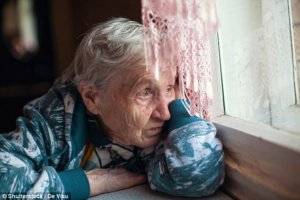08
Nov
Senior Loneliness and Isolation is a Major Health Risk that We Often Overlooked

This is a follow-up to a previous blog post, titled “Senior Loneliness and Isolation is a Major Health Risk that We Often Overlook”
There are several reasons why elderly people can isolate themselves from the outside world. Isolation leads to loneliness, and loneliness leads to isolation. We must all unite our efforts to break this vicious cycle that has major repercussions on our society.
How should we react when our senior citizens are literally dying from loneliness? When a large portion of Canada’s senior population are lonely or isolated, what can we do to help them? These issues can result in serious consequences to both physical and mental health. This could easily become a health crisis for Canada’s seniors, especially since the senior population is growing every year. In order to minimize the dangerous effects of loneliness and isolation, there are steps that need to be taken by government agencies, senior organizations, caregivers, and family members.
Increase Government Action
A study by Community Development Halton identifies some actions that should be taken by the Canadian government in the future to work towards potential solutions. When developing future policies, the government should work directly with the senior population to create programs that they feel are effective at addressing their needs.
There should be a focus on quickly identifying seniors who are at risk of being socially isolated so that they can be assisted. This can be done by having provinces and territories train their health staff to better identify these individuals. Staff should also establish home visit programs for individuals who are unable to engage in community programs due to disabilities or health problems. Seniors with a lack of accessible transportation options should also be targeted by these groups, as they are at risk as well.
Improve Transportation Access
As seniors get older, most of them will eventually lose their ability to drive, and this can lead to isolation. Many seniors may not necessarily know about other transportation options that are available to them. Additionally, many seniors are homebound and unable to travel easily. Finding alternative, accessible methods of transportation is important to ensure seniors who cannot drive or travel easily have a way to access their communities.
Many cities have public transportation options, but these services are not always easily accessible, especially for disabled seniors or seniors who live in rural areas. Some areas offer transportation services for seniors, and some retirement communities also offer shuttles that its residents can use. Another option is to use a ride-sharing service like Uber if the senior is comfortable doing so. Having access to transportation options can help reconnect isolated, lonely seniors with their communities. This is a major benefit, as being connected to their communities can allow these seniors to re-integrate themselves and make new connections.
Foster Community Interaction
By integrating lonely, isolated seniors into their communities, this will allow them to engage in activities and make meaningful friendships. Seniors can attend group activities with others for a way to meet new people. Activities like card games, crafts, and movie nights are popular among seniors. Taking classes is also another good way to socialize. These could be things like knitting, yoga, computer classes, or cooking classes, just to name a few.
Volunteering is also a great way for seniors to get involved in their communities. Many seniors are retired and miss having a sense of purpose, so volunteering can be a great outlet. Engaging in volunteering or other community activities is a way to provide isolated seniors with the ability to get involved with their communities while making new connections and developing meaningful social relationships. However, some seniors may not be healthy or strong enough to leave their homes and attend these activities. For these seniors, using technology can be a great way to connect.
Utilize Technology
Technology has been shown to have a positive impact on senior isolation. Social media can help seniors stay in contact with family or friends who they may not be able to connect with otherwise. Video calling services like Skype or Facetime can let seniors have “face-to-face” communication with family members and friends as well. Using these services is also a great way for seniors to connect and communicate with younger family members like grandchildren.
There are also senior groups online that can be used to find and connect with new people. This is a great way for homebound or disabled seniors to connect with others, as they may not have the same opportunities to do so in person. It also allows these groups to connect with people facing similar problems. However, some experts have stated that technology should be used to supplement in-person relationships, not to replace them. More research is needed to determine whether technology is as useful in alleviating loneliness and isolation when compared to in-person contact.
Conduct Further Research
Moving forward, a major step that needs to be taken is to conduct further research on senior loneliness and isolation. There is much to be learned about this field, and the findings will no doubt help provide a better understanding of the problem and how it can be improved. More analysis needs to be done on the differences between loneliness and isolation and whether they have different effects on senior health. As they are different issues, they may have different effects and may require different solutions.
More investigation also needs to be done on the best ways to reach out to lonely seniors and help improve their situations. This includes finding the best ways to identify lonely, isolated seniors, which can be very difficult. Dealing with this problem will not be easy, but it’s something that needs to be addressed. As the number of seniors in Canada grows, the potential for a loneliness epidemic grows with it. Loneliness and isolation can have major negative impacts on the lives of seniors across Canada, and if unaddressed it will only continue to get worse.
Conquering isolation and loneliness requires teamwork
Loneliness and isolation among the elderly is, first and foremost, a social issue that must be closely monitored by our governments, the medical community, social workers, organizations, etc. In addition, families should be closer to their elderly members and pay attention to the signs indicating that a senior’s well-being might be deteriorating.
If an elderly member of your family or circle of friends seems to be isolating himself or herself, or seems to suffer from loneliness, here is some advice to help you remedy the situation:
- Visit the person as often as you can. If you have a busy schedule, make shorter visits.
- Call the person regularly and encourage him or her to phone you. Make sure that the person can easily reach you. Show interest in the topics that are on his or her mind: day-to-day life, health, hobbies and problems.
- Also talk about subjects that interest you, even if you get the feeling that the person doesn’t feel involved. Who knows, you might benefit from his or her advice, and it will also give you the opportunity to make the person feel that he or she matters.
- Encourage the person to stay active. Go for a walk together or tag along when she or he runs errands.
- Suggest adopting a pet. Offer your help in caring for the pet or for vet appointments.
- Offer the person your help for personal care or housework. Styling someone’s hair or helping her or him straighten or clean up the house can give you the opportunity to chat and to build a better relationship.
- Invite the person for lunch or dinner at your house, ideally with the family. Lively meals are also great opportunities to talk and to enjoy the good things in life.
- Encourage the person to join or sign up for various activities: bridge, bingo, arts and crafts, outings with a seniors’ club, dancing, etc. If necessary, drive him or her; you and the other members of your family can even take turns playing chauffeur.








